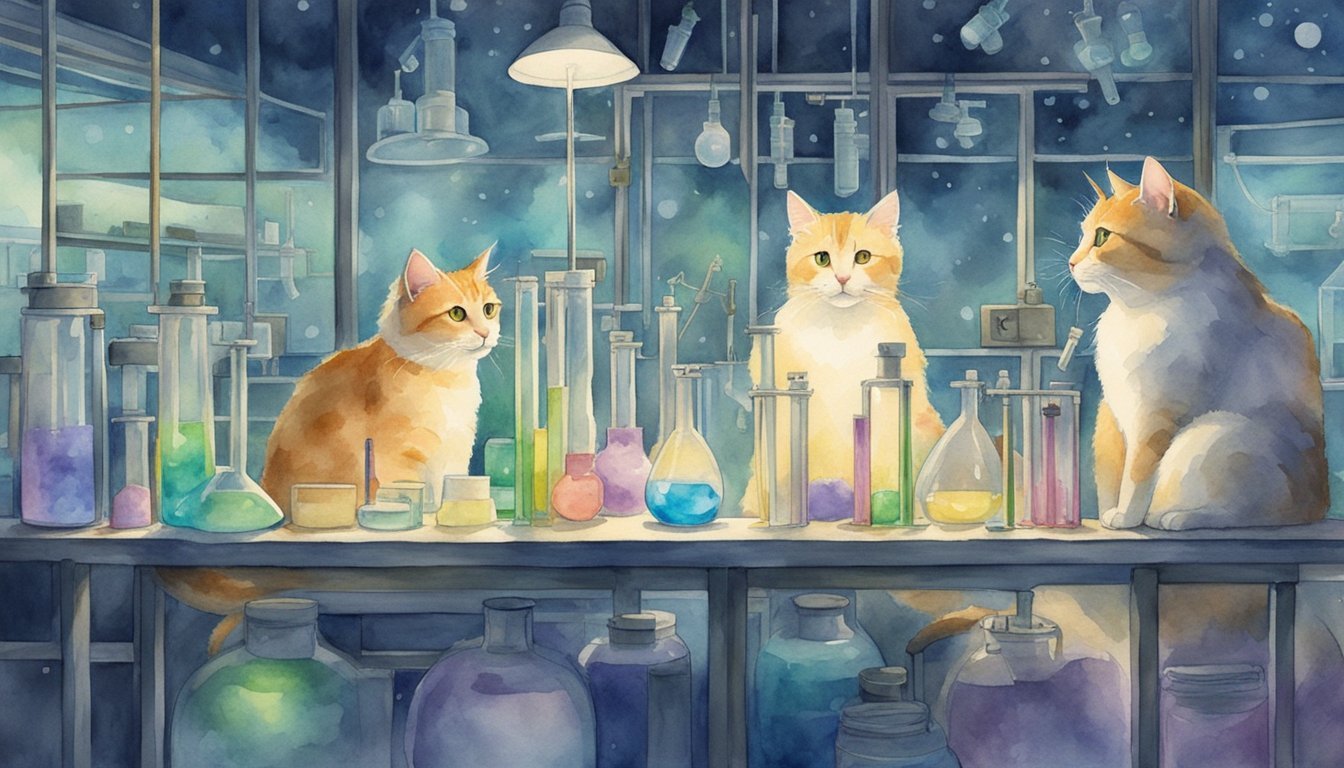Origins of Glow in the Dark Cats
The first glow-in-the-dark cats originated from a series of genetic engineering experiments aimed at researching diseases such as HIV. Scientists sought a method to study the effects of diseases on the feline immune system and its similarities to humans. To achieve this, researchers incorporated the green fluorescent protein (GFP) gene, naturally found in the crystal jelly, into the domestic cat’s genetic makeup.
Mayo Clinic scientists, under the direction of Eric Poeschla, utilized a modified virus to carry the GFP gene into the eggs of domestic cats before fertilization. This technique ensured that the jellyfish gene was present from the earliest stages of development, resulting in kittens with altered genes that expressed the fluorescent protein in their tissues.
The fluorescent protein allowed for easy identification of genetically modified animals, as it caused cats to emit a green glow when exposed to specific wavelengths of light. Such genetic modification served a dual purpose: tracking the spread and influence of disease-related genes and understanding the genetic underpinnings of feline immunity.
Results of these groundbreaking studies were eventually published in the journal Nature Methods. This achievement, while visually stunning, marked an important step in the field of genetic engineering for medical research, underscoring the potential for similar methodologies to be applied across a variety of genetically modified animals, including glow-in-the-dark fish.
The creation of glowing cats not only piqued the curiosity of the scientific community but also ignited discussions about the ethics and future applications of genetic modification in domestic animals. Despite the debate, the success of these experiments opened doors for advancements in understanding complex genetic and viral interactions within the scope of human and animal health.
Scientific and Ethical Implications

The scientific breakthroughs involving glow-in-the-dark cats have significant implications, raising both potential health benefits for research and intricate ethical dilemmas.
Research and Health Benefits
Genetically modified cats that glow green have been developed to study feline immunodeficiency virus (FIV), a precursor to human immunodeficiency virus (HIV). By introducing a gene that codes for green fluorescent protein (GFP), inherited from jellyfish, researchers can visually track the effects and spread of viral infections. The same technology has enabled the study of other species, like monkeys and rabbits, to understand HIV and potential gene therapies.
Considerations in Genetics
The application of genetic modification in these cats involves inserting protective genes against diseases like FIV, which are studied alongside the glowing trait. This dual-purpose engineering could lead to advancements in how diseases are fought in multiple mammal species, including humans. However, the manipulation of DNA sparks debate over the limit and scope of genetic engineering, especially when considering the replication of this process across various animal species for research purposes.
Ecological and Ethical Issues
Ethical considerations emerge when discussing the modification of animals, especially when released into the environment. Glow-in-the-dark animals could affect ecological systems and the welfare of feral cat populations. Moreover, the broader implications for animal rights, welfare, and the potential psychological impact on modified animals contribute to the controversy. Wrestling with the balance of scientific progress and the ethical treatment of animals is a nuanced and ongoing challenge within the scientific community.

